5052 Aluminum Plate Sheet
Temper: H32/H34/H36/H38/O Competitive Price
5052 aluminum plate is a popular aluminum alloy with excellent corrosion resistance, high strength, and good formability. It is commonly used in various industries such as marine, automotive, aerospace, and general manufacturing.
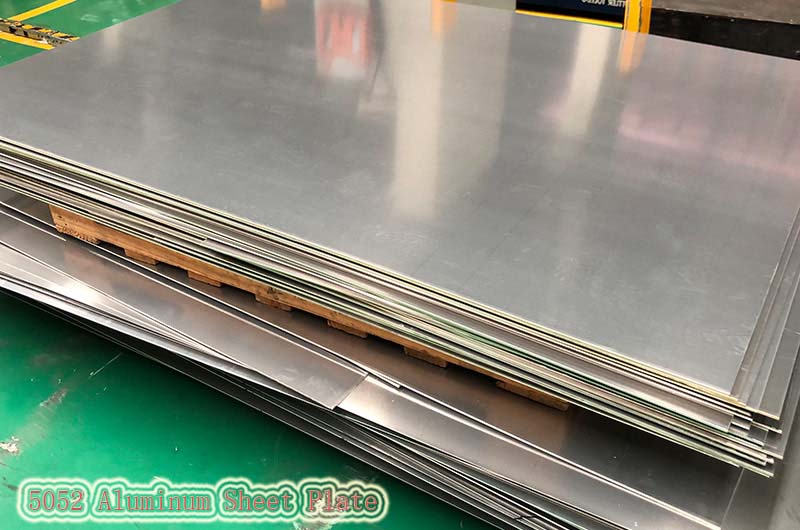
5052 aluminum alloy has good formability, welding performance, and machining performance, but these properties may be affected by the alloy state. Selection of appropriate processing and welding methods and operating conditions are critical to ensuring alloy performance and quality.
5052 Aluminum Plate Specifications
5052 Aluminum Plate Temper
The commonly used state of the 5052 aluminum plate is H32, which represents the stable state of strain hardening. Other available states include H34, H36, and H38.
| Property | Range/Description |
|---|---|
| Width Range | Standard: 1, 000mm to 2, 500mm (39" to 98") |
| Length Range | Standard: 2, 000mm to 6, 000mm (79" to 236") |
| Surface Treatment | Satin finish natural aluminum finish, Anodized, Powder Coated, Painted |
| Product Certification |
ISO 9001 (Quality Management System) ISO 14001 AS9100 (Aerospace Quality Management System) |
| Production Standards |
ASTM B209 (Standard Specification for Aluminum and Aluminum Alloy Sheets EN 485 (Aluminum and aluminum alloys - Sheet, strip, and plate) |
5052 Aluminum Plate Thickness
5052 aluminum plate is available in a variety of thicknesses, typically from 0.2mm (0.008") to 25mm (1").
Common thicknesses include 0.5mm (0.02"), 1mm (0.04"), 2mm (0.08"), 3mm (0.12") and 6mm (0.24").
- 1/8" 5052 Aluminum Plate
- 3/16" Aluminum Plate 5052
- 1/4" 5052 Aluminum Plate
- 5052 Aluminum Plate .125

Alloy 5052 Mechanical Properties
- Tensile strength: 210 - 260 MPa
- Yield strength: 145 - 195 MPa
- Elongation: 10 - 20%
- Hardness (Brinell): 47 - 60 HB
| Hardening | Ultimate MPa (PSI) |
|---|---|
| 5052 O Aluminum Plate | 195 (28000) |
| 5052 H32 Aluminum Plate | 228 (33000) |
| 5052 H34 Aluminum Plate | 262 (38000) |
| 5052 H36 Aluminum Plate | 276 (40000) |
| 5052 H38 Aluminum Plate | 290 (42000) |
| Hardening | Yield MPa (PSI) |
|---|---|
| 5052 O Aluminum Plate | 89.6 (13000) |
| 5052 H32 Aluminum Plate | 193 (28000) |
| 5052 H34 Aluminum Plate | 214 (31000) |
| 5052 H36 Aluminum Plate | 241 (35000) |
| 5052 H38 Aluminum Plate | 255 (37000) |
| Hardening | Tensile Strength acc. ASTM B209 [KSI] |
|---|---|
| 5052 H32 Aluminum Plate | 31.0 - 38.0 |
| 5052 H34 Aluminum Plate | 34.0 - 41.0 |
| 5052 H36 Aluminum Plate | 37.0 - 44.0 |
| 5052 H38 Aluminum Plate | >39.0 |
| Hardening | Yield Strength acc. ASTM B209 [KSI] |
|---|---|
| 5052 H32 Aluminum Plate | >23.0 |
| 5052 H34 Aluminum Plate | >26.0 |
| 5052 H36 Aluminum Plate | >29.0 |
| 5052 H38 Aluminum Plate | >32.0 |
5052 Aluminum Plate Physical Properties
| Property | Value |
|---|---|
| Density | Approximately 2.68 g/cm³ |
| Electrical Conductivity | High (Good conductor) |
| Specific Heat Capacity | Approximately 0.897 J/(g·K) |
| Modulus of Elasticity | Approximately 68.9 GPa (10, 000, 000 psi) |
5052 Aluminum Plate Thermal Properties
| Property | Value |
|---|---|
| Melting Point | 600-650°C (1112-1202°F) |
| Coefficient of Thermal Expansion | 23.8 x 10^-6 /°C |
| Thermal Conductivity | 138-150 W/(m·K) |
| Specific Heat Capacity | 0.897 J/(g·K) |
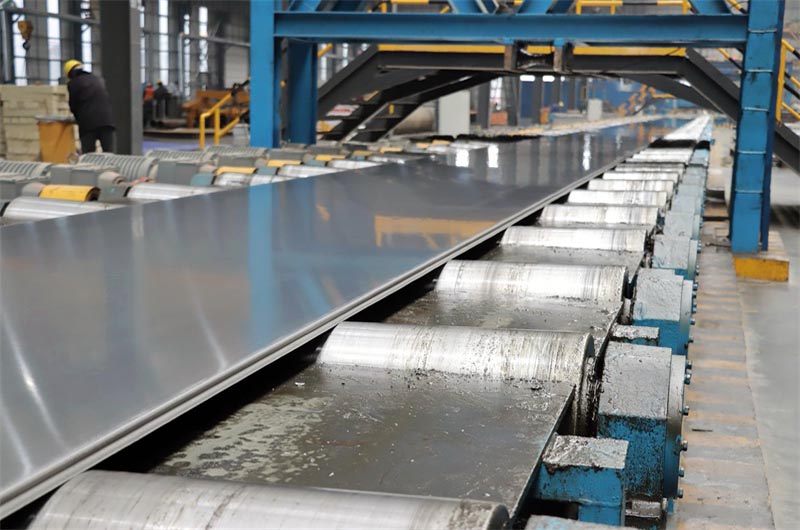
5052 Aluminum Alloy Composition
- Aluminum (Al): 95.7 - 97.7%
- Magnesium (Mg): 2.2 - 2.8%
- Chromium (Cr): 0.15 - 0.35%
- Iron (Fe): 0.0 - 0.4%
- Silicon (Si): 0.0 - 0.25%
- Copper (Cu): 0.0 - 0.1%
- Manganese (Mn): 0.0 - 0.1%
- Zinc (Zn): 0.0 - 0.1%
- Other (each): 0.0 - 0.05%
- Other (total): 0.0 - 0.15%
Forming Properties of 5052 Aluminum Plate
1. Good Plasticity in Hot Processes
5052 aluminum alloy has good plasticity at high temperatures (420°C to 475°C) and is suitable for hot working processes such as forging and die forging. Within this temperature range, thermal deformation of up to 80% is possible, which means it can be plastically molded into various shapes.
2. Cold Stamping Performance is Related to Alloy State
The cold stamping performance of 5052 aluminum is related to its condition. Generally speaking, its cold stamping performance is good in the annealed (O) state. In the H32 and H34 states, the performance is second, while in the H36/H38 state, the performance is poor. This means that the state of the alloy affects its plasticity and processability in the cold stamping process.
Welding Performance of 5052 Aluminum Plate
- Solderability - Gas: Good
- Weldability - Arc: Very good
- Solderability - Resistor: Very Good
- Brazeability: Acceptable
- Solderability: Not recommended
1. 5052 aluminum plate has good performance in gas welding, arc welding, resistance welding, spot welding, and seam welding.
5052 aluminum alloy is suitable for a variety of welding methods, including gas welding, arc welding, resistance welding, spot welding, and seam welding, and has good performance. This makes it useful in the manufacturing field for making a variety of welded structures and components.
2. Crystal cracks tend to appear during argon arc welding of 5052 aluminum plates
TIG welding may have a tendency to cause crystallization cracks. This may require additional measures or the use of special welding methods to avoid crystallization cracks.
3. The 5052 aluminum plate is good, but the soft brazing performance is poor.
Brazing (such as aluminum brazing) generally provides good welding properties, while soft soldering (such as aluminum soft soldering) may perform poorly. Selecting the appropriate welding method and materials is critical to achieving the desired connection.
4. 5052 aluminum plate weld performance
The weld strength and plasticity of 5052 aluminum alloy are relatively high, usually reaching 90% to 95% of the strength of the base metal. However, the weld may not be highly airtight, so 5A03 alloy is recommended as the solder to improve airtightness and reduce the tendency to crack.
Mechanical Processing Properties of 5052 Aluminum Plate
The machinability of 5052 aluminum alloy may be poor in the annealed state but may be improved in the cold work-hardened state. This suggests that the machinability of alloys may be affected by alloy conditions and processing. Therefore, factors such as the state and hardness of the alloy usually need to be considered before machining.
Typical 5052 Aluminum Plate
-
5052 h32 Aluminum Plate Sheet
5052 H32 aluminum plate has higher fatigue strength than most alloys, 5052H32 aluminum plate has excellent corrosion resistance, especially in marine applications, and has excellent machinability.
-
5052 h34 Aluminum Plate Sheet
5052 h34 aluminum plate has enhanced corrosion resistance, workability, strength, good formability and weldability.
-
5052 h38 Aluminum Plate Sheet
5052-H38 aluminum is 5052 aluminum in H38 condition. This is the strongest state usually produced by strain hardening and stabilization. It is closely related to H18.
5052 H32 Aluminum Plate
The "H32" designation indicates that the aluminum sheet has been strain-hardened and stabilized for increased strength.
- Tensile strength between 210 and 260 megapascals (MPa)
- Yield strength of at least 160 MPa
Common Applications: Sheet metal parts, fuel tanks, trailer siding, marine components, and building panels for general-purpose applications requiring moderate strength and good formability.

5052 H34 Aluminum Plate
The "H34" designation indicates a higher hardness than H32. It has been strain-hardened and stabilized to a greater extent for higher strength.
- Tensile strength is typically between 230 and 280 MPa
- Yield strength of at least 180 MPa
Common Applications: Automotive parts, aircraft fuel tanks, chemical equipment, marine components, and pressure vessels. It is used in applications requiring higher strength than H32, such as those subjected to higher stresses or loads.
5052 H36 Aluminum Plate
The "H36" designation stands for a harder temper than the H34. It undergoes a higher degree of strain hardening and stabilization, further increasing its strength.
- Tensile strength is typically in the range of 250 to 300 MPa
- Yield strength of at least 200 MPa
Common Applications: Shipbuilding, armor plates, and structural components. This temper is suitable for applications requiring higher strength than H34 and increased resistance to deformation and damage.
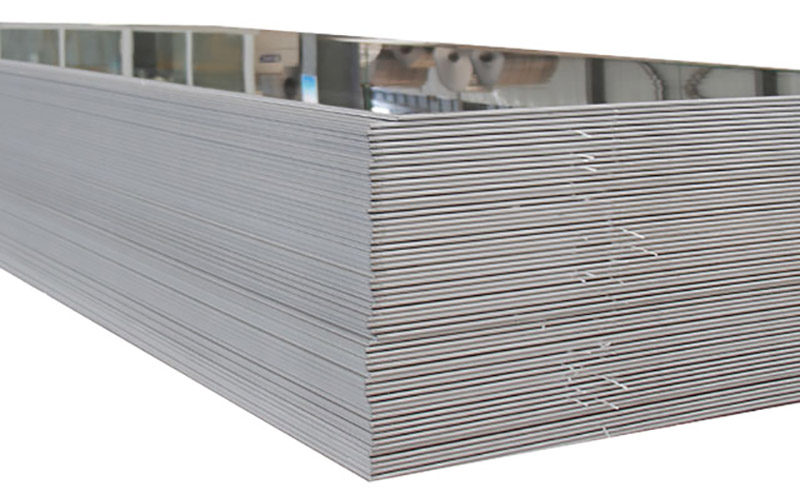
5052 H38 Aluminum Plate
The "H38" designation signifies the grumpiest of those you listed. It has been extensively strain-hardened and stabilized to achieve the highest strength levels possible.
- Tensile strength is typically between 270 and 330 MPa
- Yield strength of at least 220 MPa
Common Applications: High-strength structural components, marine equipment, and aerospace applications. This temper is suitable for applications requiring maximum strength and hardness, such as those subjected to extreme pressure or harsh environments.
5052 0 Aluminum Plate
The "0" flag indicates soft annealing and tempering. The aluminum plate in this state has been annealed to relieve internal stresses and improve its workability. It is not strain-hardened and has the lowest strength in the listed temper.
Common Applications: Roofing, Signage, Decorative Use and General Manufacturing. Soft annealed tempers are preferred for applications where formability and ease of bending are a priority, without high mechanical strength.
What is the 5052 Aluminum Plate Used for?
Applications: 5052 aluminum sheet is used in a wide variety of industries and uses, including:
5052 Marine Aluminum Plate
- Applications: Hulls, decks, and other marine components
- Alloy: 5052-H32 is typically used alone for nonstructural marine components such as interior panels and trim.
5052 Automotive Aluminum Plate
- Applications: Body panels, fuel tanks, and structural parts
- Alloy: 5052-H32 is typically used for nonstructural automotive components and interior and trim elements. Structural components may contain other alloys such as 6061 or 6063 for added strength.
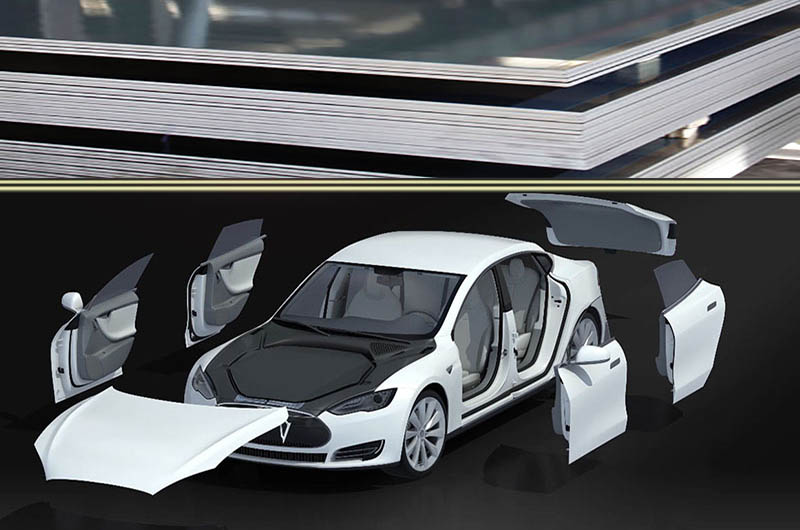
5052 Aerospace Aluminum Plate
- Applications: Aircraft fuel tanks, wings, and fuselage panels
-
Alloy:
- 5052-H32 is typically used for nonstructural aerospace components, interior panels, and trim.
- Structural components such as aircraft fuel tanks, wings, and fuselage panels may use other alloys such as 2024 or 7075 for greater strength and performance.
Construction Industry
- Applications: Roofs, Siding, and Building Components
-
Alloy:
- 5052-H32 is typically used for nonstructural building components such as roofing and siding.
- For structural components, other alloys such as 6061 or 6063 can be used to meet specific strength requirements.
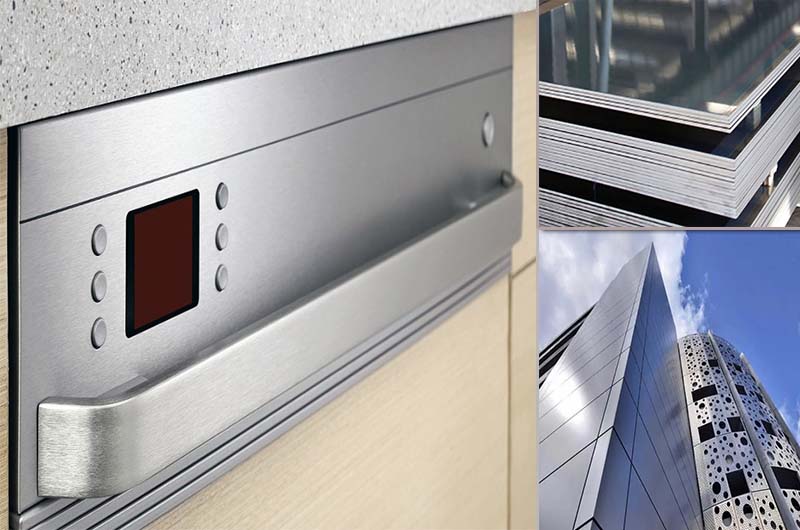
Electrical Industry
- Application: Electrical enclosures and conductors
-
Alloy:
- 5053-H32 is commonly used in electrical enclosures due to its corrosion resistance and formability.
- Conductors often use other alloys such as 1350 or 6101 because of their conductive properties.
General Sheet Metal Fabrication
- Applications: Industrial Equipment, Signage, and Cabinets
- Alloy: 5052-H32 is widely used in general sheet metal fabrication applications for its formability, corrosion resistance, and aesthetics.
Packaging Industry
- Applications: Cans, Lids and Caps
- Alloy: 5052-H32 is commonly used in the production of cans, lids, and bottle closures due to its excellent formability and corrosion resistance.
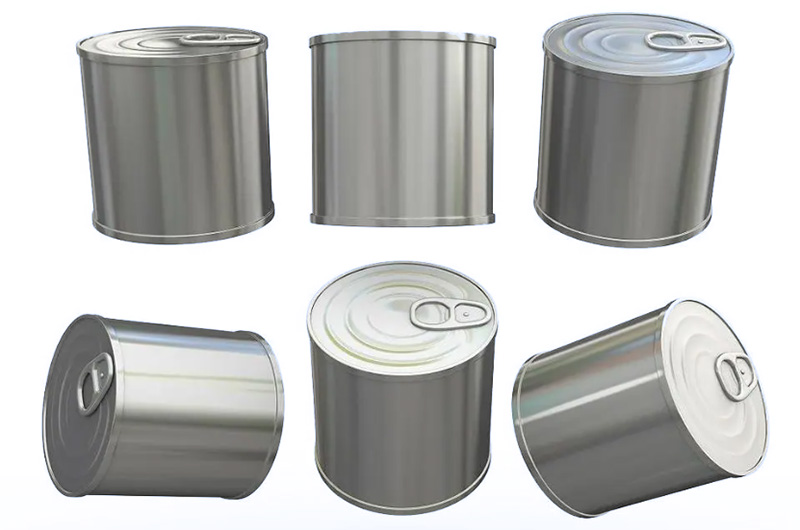
NOTE: While 5052-H32 is typically used for the above applications, specific alloy and temper selections may vary based on design requirements, performance specifications, and industry standards. It is always recommended to consult an industry professional or refer to specific product specifications for precise alloy and temper recommendations for each application.
5052 Aluminum Plate Supplier
Haomei Aluminum is an experienced supplier that can provide invaluable expertise and advice and can guide you in selecting the correct type of 5052 aluminum sheet for your specific application.
- Quality and Certification: Haomei Aluminum offers high-quality 5052 Aluminum Plate that meet industry standards and specifications. For example ISO certification or other relevant certification.
- Extensive product range: 5052 Aluminum Plates should be available in various sizes, thicknesses, and finishes to meet different applications and customer requirements.
- Custom Options: If you have specific requirements, such as custom sizes or special finishes, we can accommodate these needs and provide custom solutions.
- Competitive Prices: Provide competitive prices without compromising product quality.
5052 Aluminum Bending
5052 aluminum has moderate strength and excellent workability, making it an alloy that is easy to bend and form. 5052 aluminum can be bent using a variety of methods, including:
1. Press brake bending: This is a common method for bending 5052 aluminum sheets. The press brake applies force to the aluminum workpiece to bend it to the desired angle. Tools used on press brakes should have a radius or V-shaped die that matches the thickness of the aluminum to avoid cracking or deformation.
2. Roll Bending: For large radius curves or cylindrical shapes, roll bending is an option. In this method, a 5052 aluminum sheet is passed through a series of rollers that gradually bend it into the desired shape.
3. Heat Bending: 5052 aluminum can be heat bent, which requires heating the material to a temperature range of approximately 300 to 400°C (572 to 752°F) before bending. Heat bending reduces the risk of cracking and allows for tighter bends. However, it requires specialized equipment and careful temperature control.
When bending 5052 aluminum, the following tips must be considered:
- Make sure the 5052 aluminum is clean and free of contaminants, as impurities can weaken the material and cause defects during bending.
- Use appropriate tools, molds, and methods according to bend radius and angle requirements.
- Pay attention to the grain direction of the material. It is generally preferred to bend perpendicular to the grain direction to minimize cracking.
- Avoid excessive bending as this may cause the material to crack or fail. See bend allowance and bend deduction calculations if necessary.
- Use a lubricant or anti-stick coating to reduce friction between the material and the bending tool to prevent scratching and damaging the aluminum surface.
- Before bending the final workpiece, practice on scrap material or perform test bends to determine the correct setup and method.
By following these guidelines and using the proper equipment and techniques, you can successfully bend 5052 aluminum to meet your specific design and manufacturing needs.
5052 Aluminum Welding
Welding 5052 aluminum can be done using a variety of methods, and it is a commonly used aluminum alloy for welding due to its excellent corrosion resistance and moderate strength. Some considerations when welding 5052 aluminum:
1. Welding Process
Common welding processes for 5052 aluminum include TIG (tungsten inert gas) welding and MIG (metal inert gas) welding.
- TIG welding is often favored for its precise control and ability to create high-quality welds.
- MIG welding is faster and better suited for thicker sections.
2. Cleanliness
Cleanliness is critical when welding aluminum. Make sure the aluminum surface to be welded is free of contaminants such as oil, grease, dirt, and oxides. Use a stainless steel brush, acetone, or a special aluminum cleaner to clean the material.
3. Filler Alloy
The best filler alloy for welding 5052 aluminum is 5356. It has good strength and corrosion resistance, making it a compatible choice for 5052.
4. Connector Design
Proper joint design is critical. Use a joint design that minimizes gaps and provides a good fit. Beveling the edges of thicker sections helps achieve better penetration.
5. Warm Up
Welding 5052 aluminum generally does not require preheating unless you are working with very thick sections. Preheating helps reduce the risk of cracking in thicker materials.
6. Welding Technology
When TIG welding, a gentle braiding technique is used to ensure uniform heat distribution and penetration.
Maintain consistent travel speed and angle with MIG welding.
7. Protective Gas
Use a shielding gas suitable for aluminum welding, usually pure argon or a helium-argon mixture. The choice of gas depends on the welding process and specific application.
8. Post-weld Cleaning
After welding, it is important to clean the weld area to remove any remaining oxides or contaminants. This can be done using a stainless steel brush or chemical cleaning.
9. Post-weld Heat Treatment
5052 aluminum generally does not require post-weld heat treatment. However, if specific mechanical properties are required, solution heat treatment followed by artificial aging may be considered.
Specific welding parameters and techniques may vary depending on the thickness of the material, the welding process used, and the welding equipment.
People also searched for Aluminum Plate
-
5005 Aluminum Plate Sheet
5005 aluminum is a medium-strength aluminum alloy with a small amount of magnesium as the main alloying element. It has good formability and is often used in applications requiring anodized surface treatments.
-
5005 h32 Aluminum Plate Sheet
5005-H32 aluminum is 5005 aluminum in the H32 condition. To achieve this state, the metal is strain-hardened and then stabilized to about one-fourth the strength between annealed (O) and fully hard (H38).
-
5005 h34 Aluminum Plate Sheet
5005 H34 aluminum has stable properties, it can stabilize mechanical properties and eliminate residual internal stress, and generally improves ductility.

